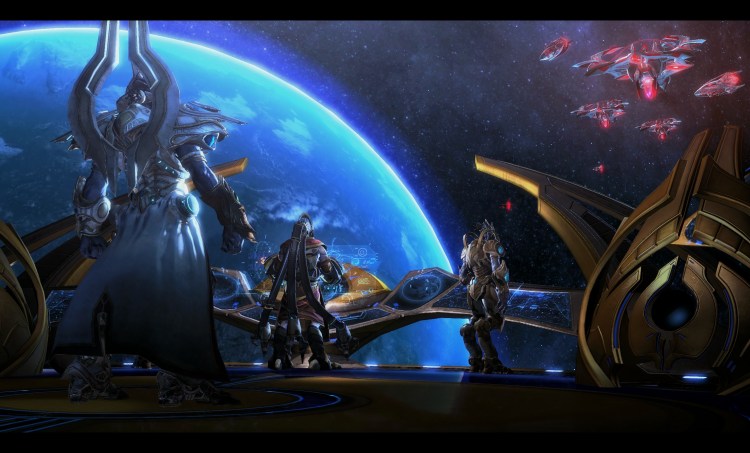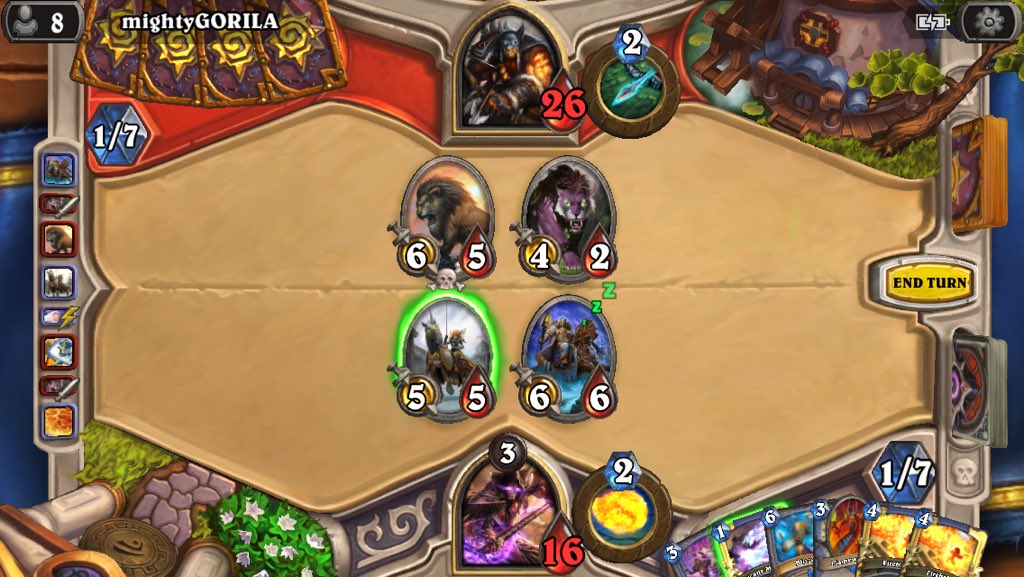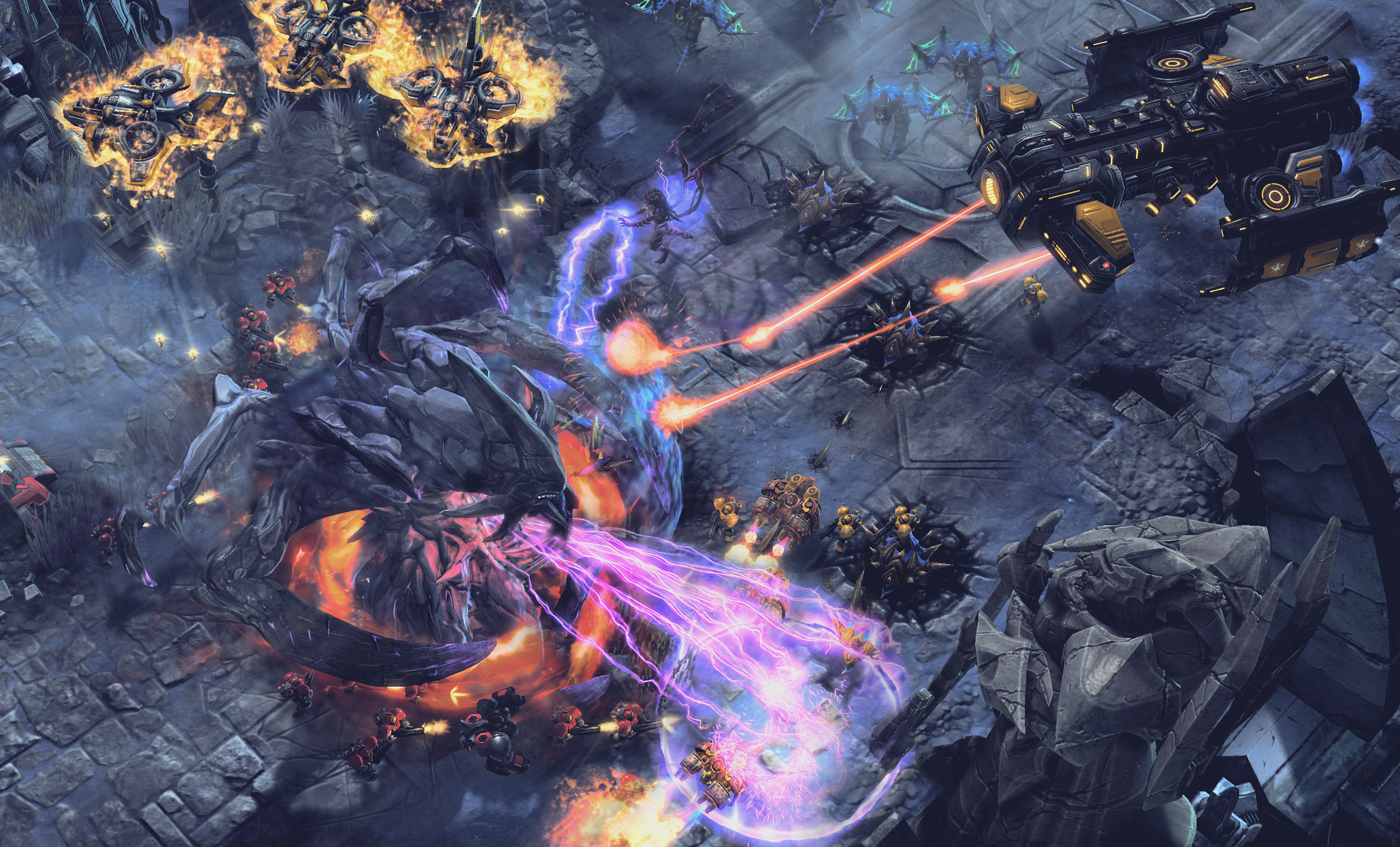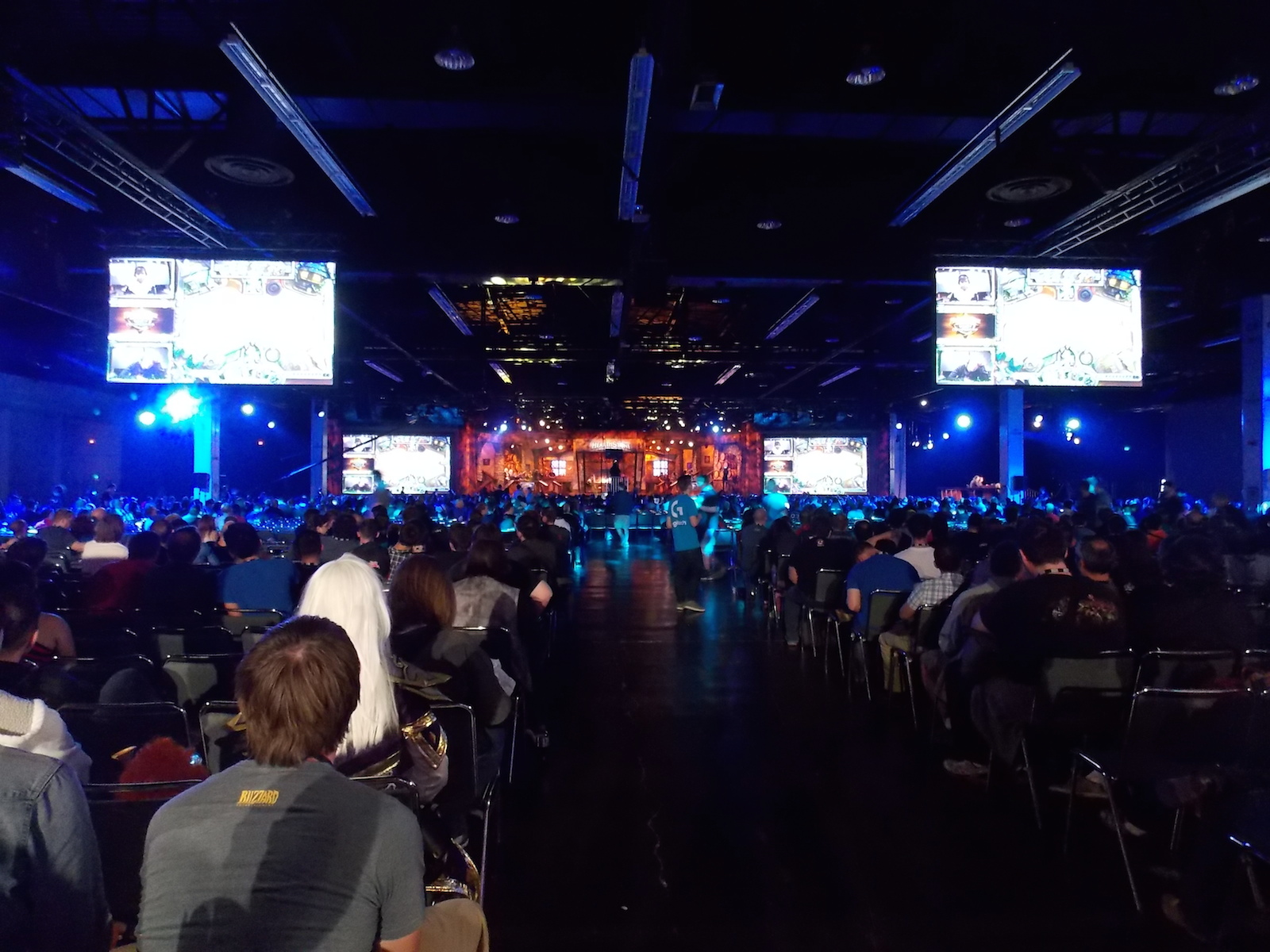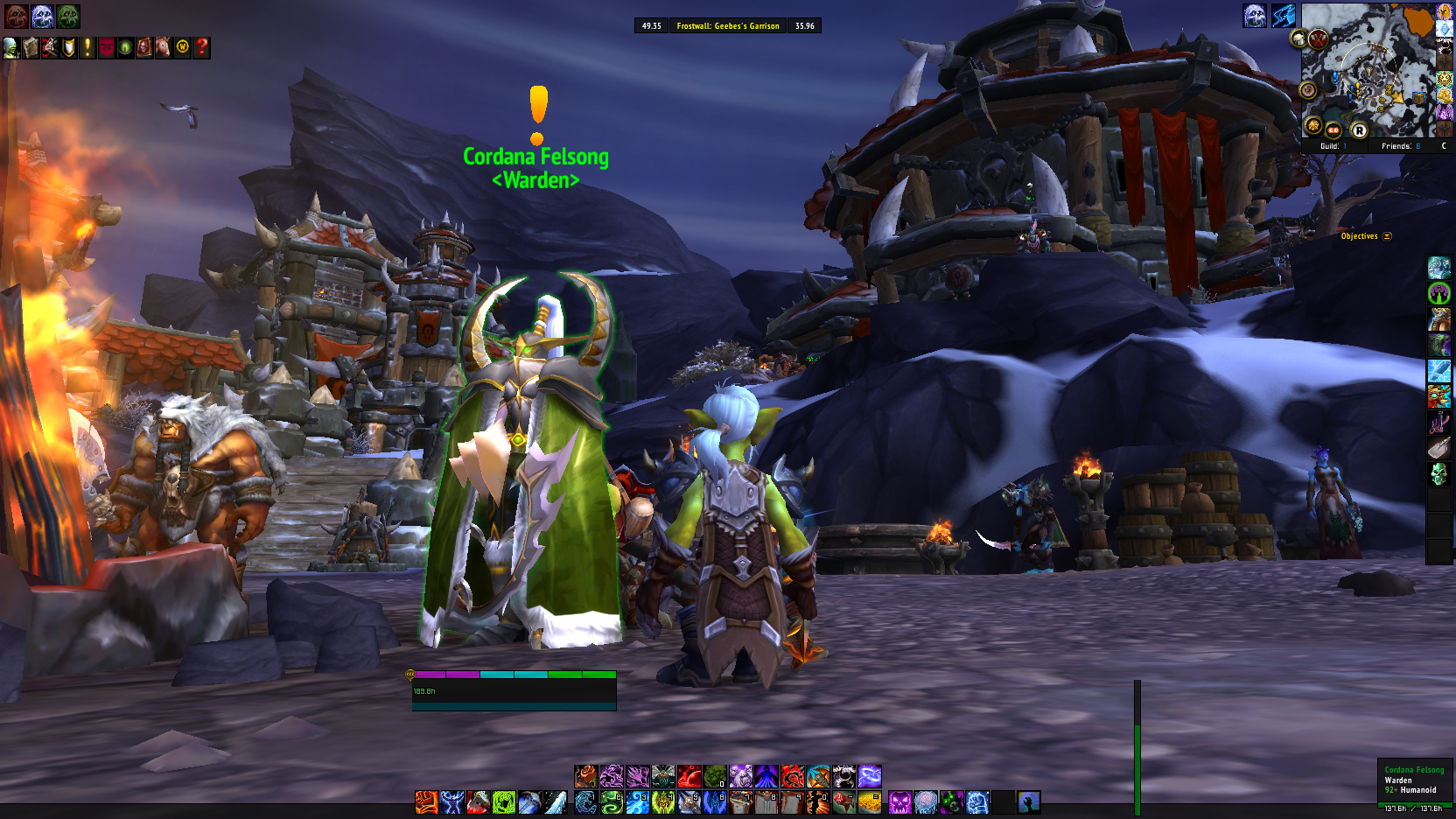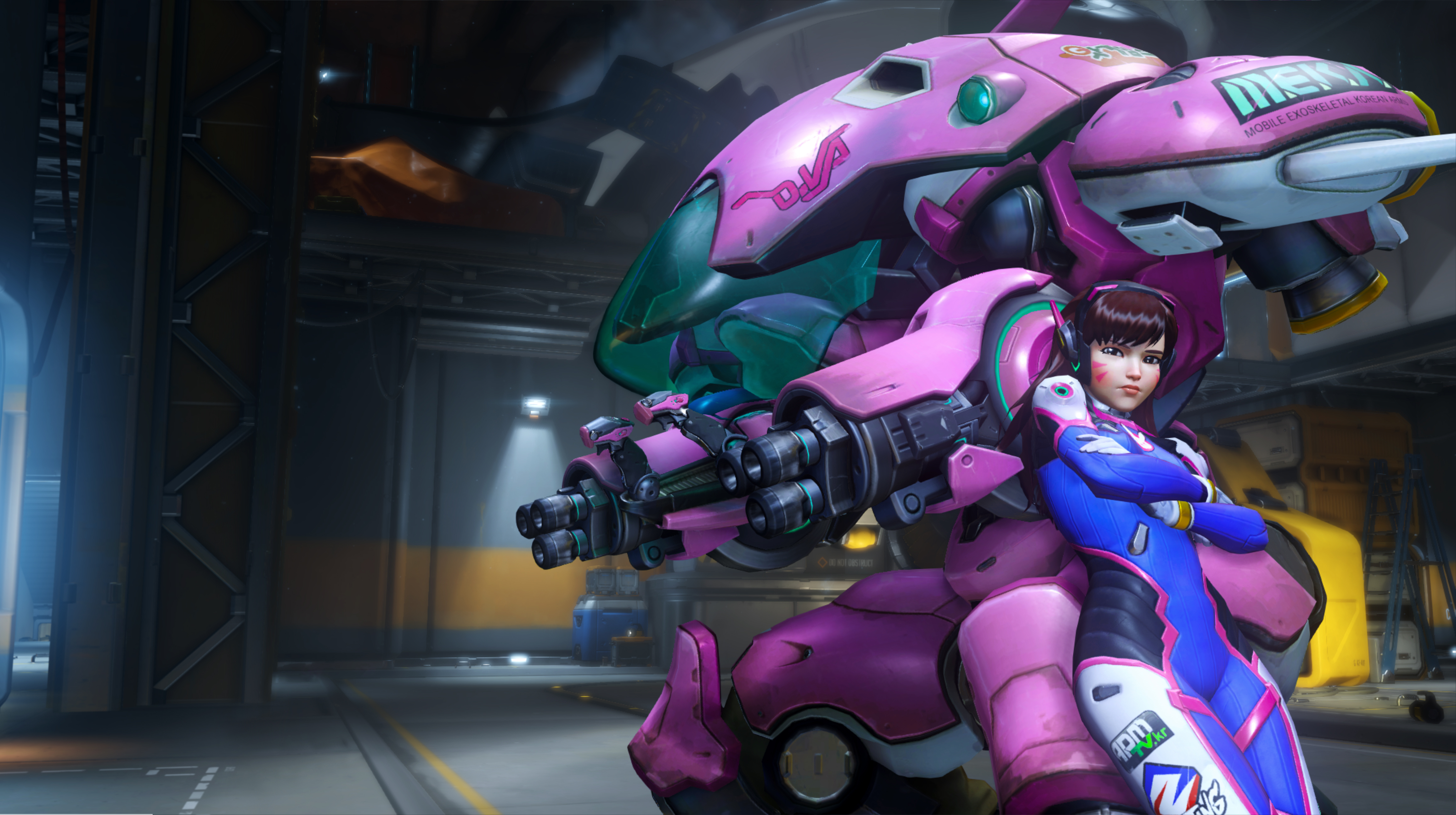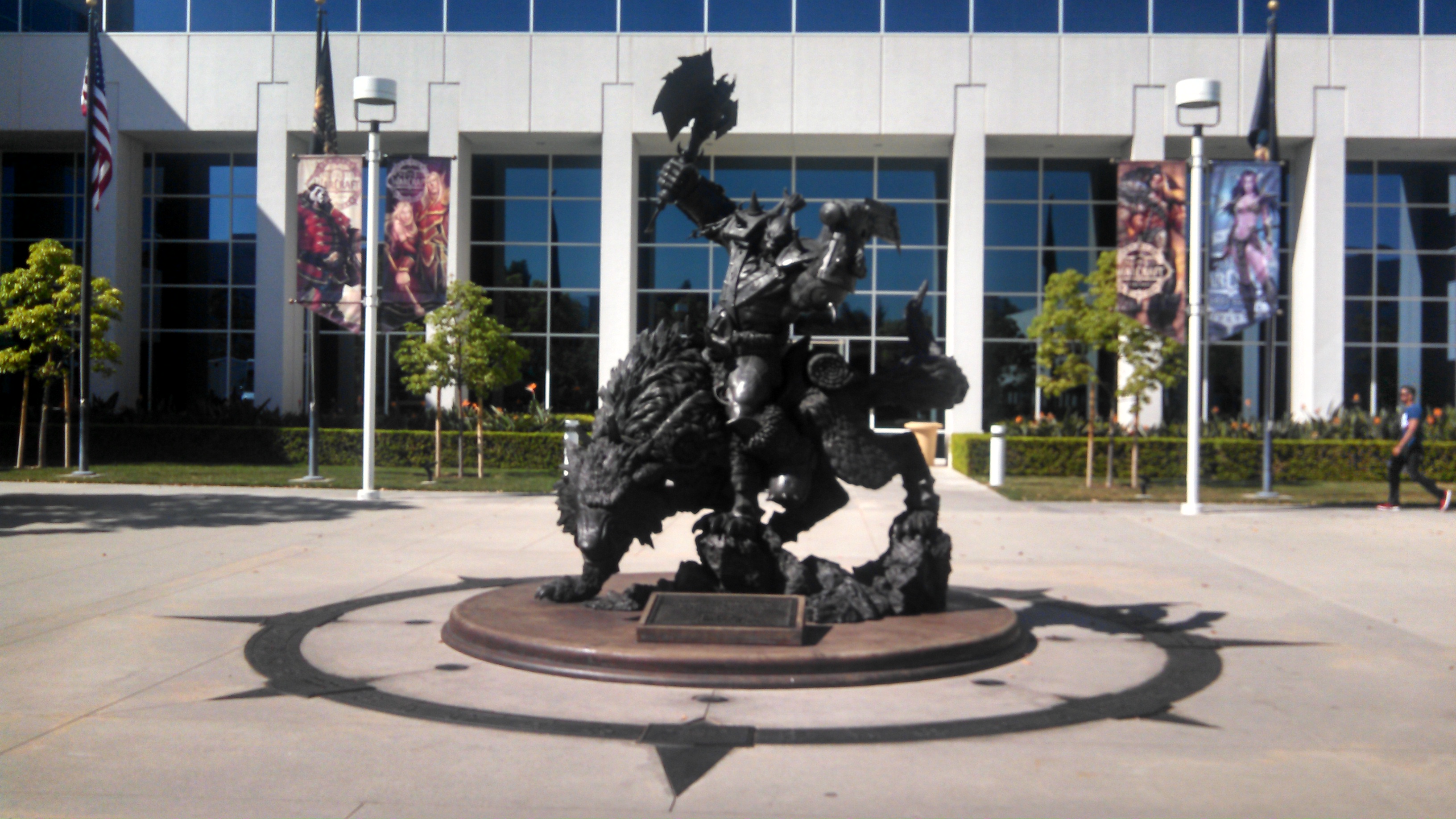Blizzard Entertainment executives consider deep mobile games to be a possible next step for the company, which celebrates its 25th anniversary this week.
We talked with president and co-founder Michael Morhaime, senior vice president and co-founder Frank Pearce, and senior vice president Chris Metzen about the future of Blizzard development.
Activision Blizzard is the fifth largest company in the world in terms of gaming revenue — second, if you include the revenue of mobile giant King Entertainment, which it acquired last year. It has the world’s largest subscription-based massively multiplayer online role playing game, the biggest collectible card game, and a burgeoning esports empire of paid competitions featuring its games. It is a juggernaut in the gaming industry, and the first movie based on its games will launch this summer.
For more on Blizzard, see our transcript of the Morhaime interview and a look back at the company’s first 25 years.
“Activision/Blizzard will have the broadest range of games in terms of devices and genres on the planet,” in part because of the King acquisition, said analyst Peter Warman at Newzoo.
Just some of the three executives’ goals:
- Make it easier for players to create and share content in Blizzard games
- Represent a more diverse audience in-game
- Dominate esports
- Keep updates coming on six major franchises
- Keep making games that are easy for a broad audience to pick up (and, one hopes, hard to put down)
- And work to figure out ways to, maybe, help us be a little nicer to each other online
One thing that’s not on the list: virtual reality. All three executives said they were keeping an eye on the platform but had no plans to immediately begin development on VR for any of their franchises. Metzen said Blizzard’s games rely on other players and a sense of community that might be difficult to achieve in a solitary VR experience.
“Everybody’s talking about VR and wearing funny helmets,” Metzen said. “Culturally, we’re interested, and we’re watching. How rad would it be to run around in World of Warcraft and see it 1-to-1? That does appear to be the next horizon. But we’re kind of watching. It’s possible that other companies will take more tentative steps and plant their flags. I don’t think we’re quite ready to conquer all that yet.”
What’s much more exciting is a tiny 2D platform, they agreed: your smartphone.
The future is in our pockets
All three executives stopped short, unsurprisingly, of discussing Blizzard’s specific development plans after the Overwatch team shooter releases this spring.
But all mentioned mobile devices as an exciting development environment, and Pearce said that the idea of bringing Blizzard’s deep heritage in real-time strategy to that platform deserved “conscious evaluation.”
“If you look at Overwatch, if you look at StarCraft, we have multiple franchises that would lend themselves to that concept,” he said.
“If we were going to continue to evaluate experiences in real-time strategy, I think we’d have to figure out what that means to the current player space. [StarCraft II expansion] Legacy of the Void is great. [But] I don’t think that people want to sit down and play 45 minute missions any more. I think that space might need some reinventing.”
Morhaime agreed, though any new games on mobile platforms may be a while off yet while the company evaluates what to do.
“I feel like there’s still a big opportunity in mobile beyond just casual games,” he said. “I’m not sure we’ve figured out what that is yet.”
So far, Hearthstone has been doing well on mobile, staying in the top 40 grossers for iOS sales. Market research firm SuperData estimates it’s made $500 million since its debut in 2013, and it’s the leader in the $1.2 billion digital card game market.
The company doesn’t want to let other franchises go dormant as long as it has, Pearce said. The Diablo action-role playing game series had a long wait before the release of its third chapter in 2012, and the Warcraft strategy series went fallow even before the release of the World of Warcraft massively multiplayer RPG in 2004.
But having so many franchises active at once — in addition to the games above, the company has its industry-leading Hearthstone and the Heroes of the Storm multiplayer online battle arena game — can be a challenge, as players expect more and more in-game additions from every development team.
Faster content via procedural generation and players’ help
Talk with anyone at Blizzard, publicly or privately, and you’ll hear the same thing: feeding the beast strains the company. Every one of its franchises requires regular updates to keep players engaged, and some of these content packages are massive. No matter how much you deliver, gamers want more.
For Pearce, that dynamic adds to the appeal of the mobile platform — in a way, mobile games could bring the company back to its roots, when a development team of just a few people could put out a high-quality product.
“One of the important challenges for me is to figure out how we can do more with less manpower,” he said. “The WoW [core development] team is 250 people, and they’re able to create a tremendous amount of content. But all of us would still like to get more content into the hands of the community, more quickly.”
That may require putting gates in some of the walled gardens Blizzard has created, he said. Opening the door to more player-created content may make it possible for gamers to revel in each others’ creations, not just what developers build inside the massive Blizzard complex in Irvine, California.
And procedurally generated content, where new areas for combat or new monsters to fight could be automatically built on the fly using complex sets of rules, might be another way to provide new experiences with low overhead, he said.
“Our communities are voracious consumers of the experiences we create,” he said. “Anything we can do to provide more of what they crave is good. If people run out of things to do, they’re going to find other ways to occupy their time.”
Morhaime said Blizzard strives to build a reputation for only releasing games when they’re ready, which adds to the pressure.
“We’re operating six games that are all delivering content to our players. We’ll have multiple releases this year. Just being able to do all this stuff simultaneously at a Blizzard quality level—that’s not easy,” he said.
Competition from all types of other entertainment — streaming media, the Internet, basically everything that occupies our leisure time — has caused also Blizzard to branch out, all three executives said. The company has long invested in things like the novelizations of its games The first film based on a Blizzard franchise will debut this summer, as “Warcraft” the movie picks up the story of the long-suspended strategy games.
But the most important type of alternative entertainment the company will invest in this year revolves around you, the player.
Ready! Fight!
Blizzard’s card game Hearthstone is one of the top five esports games in the world, and the company recently invested in competitive in a big way.
Last year it created a new esports division, trademarked the word Compete for esports offerings, made esports history with the broadcast of the Heroes of the Dorm competition on ESPN, and made top-dollar esports challenges in a selection of games one of the core features of its annual BlizzCon convention. (The company will celebrate its 10th gathering this year.)
Metzen said that esports helps to bring gamers together, both as competitors and as spectators, which is part of what Blizzard games are all about and part of what makes BlizzCon so exciting to him personally.
“You’re getting all these people in one place to cheer and hoot and holler about these games. It’s so thrilling, it really supercharges that sense of community,” he said. “That aspect of it is important to us.”
Morhaime said the company will not release a game without considering the esports angle.
“If you’re going to create a competitive game and it’s going to be popular, you have to have an esports ecosystem around the game,” he said. “It’s a key part of our strategy going forward. … Esports is just going to grow in importance and popularity as it relates to games.”
Pearce said esports also offer the company a way to demystify complex games for new players, even in relatively friendly titles like Hearthstone. As gamers watch others play, they pick up new strategies for themselves.
“You can play through the tutorial,” he said. “But playing through the tutorial does not give you an understanding of the reality of that experience. Deckbuilding is probably the most difficult element of hearthstone. Hearthstone esport is an opportunity to lengthen that onramp for people.”
Esports and the mass market Blizzard games now command will also drive the company to appeal to a more diverse audience, all three executives said.
Helping a broader player base represent
Like all major gaming companies, Blizzard attempts to strike a balance between “hardcore” gamers and a more casual, general audience. The diversity of who calls themselves hardcore adds to that complexity, because many of them aren’t able to devote dozens of hours a week to a game thanks to jobs and families, but they still want to experience challenging , well-developed content.
Blizzard’s core philosophy over the past 25 years has always been to take games that previously appealed to a single niche and expand that to a broader audience, hopefully without losing the core gamer appeal. They did it most notably in World of Warcraft, its MMORPG, which took a game segment that had never sold more than about half a million copies and broadened it to appeal to the mass market, with record-breaking sales and a peak of more than 12 million subscribers. It even received a spoof from South Park, and it became one of the series’ best-known episodes.
The innovations that World of Warcraft brought to market — the creation of the quest “log” that made it easy for players to see what they needed to do next, the minimap, the reduced buttons onscreen, the exclamation points over the heads of questgivers to make them more easy to find, the idea that you could level up a character by doing nothing but quests (instead of “grinding” for hundreds of hours killing monsters,) among others — made it easier for people with shorter amounts of time and less dedication to the genre to dive in than predecessors such as EverQuest.
That philosophy has persisted across nearly every genre the company has entered, right up to the team shooter Overwatch, which will release this spring. The first-person shooter genre has typically appealed to a more-hardcore audience, but Overwatch includes a number of elements that may broaden the draw: a lighthearted art style, diverse characters, a huge variety in play styles and abilities, and a backstory with characters drawn to elicit sympathy.
Players are changing, Metzen said.
“Geekiness isn’t quite what it used to be. In some ways, everyone’s a gamer now,” he said. “We’re seeing people demanding more representations around the world and in society. They want popular games to be more reflective of a broader spectrum of appearance. We want to be in step with the times. We want everyone to come to this weird big geeky pool party.”
Overwatch provides an opportunity for that, he said.
“We’re trying to build a team based shooter that just has a lot of texture, that has a little something for everybody. We tried to base Overwatch on our world, to be set on Earth, so we can pull from all the texture we live in every day. This game wears its heart on its sleeve that way.
“We’re trying to build a universe that feels a little more representative, without trying to pander.”
Be excellent to each other
But part of being representative means being friendly to people from a broad variety of backgrounds — and that entails more than just representing those folks in games. While the atmosphere towards people with different genders, ethnicity and life stages (casual vs. hardcore, for example) has been friendlier in some of Blizzard’s games that in other places, the company still wants to do more to foster civil conversation.
Nielsen named World of Warcraft the most-played “core” game for women, for example — and yet even in that era, the treatment women said they got from fellow players, perhaps unused to that kind of gender balance, could use some improvement.
https://www.youtube.com/watch?v=FpdAcwCaCNQ
In more recent years, Morhaime has criticized the way some groups are excluded or attacked online (including a veiled reference to GamerGate in BlizzCon panels,) and the company has made a point of including a wide variety of characters in its games.
Overwatch, for example, includes characters of Asian and African-American descent, as well as a variety of kickass women. Hearthstone is one of the few competitive esports to include at least a few female players and organizers.
But Blizzard could still do more, Morhaime said.
“Right now, people still aren’t very nice to each other online, as a general rule,” he said. “If we can help to make the interactions between folks online safer and more friendly, that would make it all more fun and more gratifying for everyone.”
One solution is to strictly limit players’ interaction during games, as Hearthstone does, to a limited number of “emotes.” But that isn’t satisfying in a world where games like World of Warcraft have brought together lifelong friends and even spouses, he said.
“I want to see that type of connection continue as well. We’re going to do our best.”
Another quarter-century of ‘earnest epicness’
That kind of aspirational altruism has popped up at Blizzard in a way it hasn’t in some other major game-industry juggernauts its size. The orc statue in front of the main entrance to Blizzard offices is circled by the company’s eight core values, including “commit to quality” and “every voice matters,” and while gamers might suggest the company doesn’t always reach those lofty goals, few would suggest that it doesn’t try.
Metzen said that attitude plays out in the company’s games as well, which tend to feature the player as a hero with values of his or her own rather than a rampaging death force. Well, perhaps a rampaging death force with values.
“I think it’s remarkably the same over time. I think it’s in our DNA. Even with games like Hearthstone — the game’s much less about immersion than about flavors of a world. It’s still pretty heroic,” he said. “While [Overwatch’s] universe is very different, it’s still very informed by that core DNA. We want you to feel like this amazing person that can change the world and dispense indiscriminate justice.”
He characterized the concept as “earnest epicness,” and predicted it would remain the core concept of Blizzard’s games in the future.
“There are definitely things I hope do not change,” he said. “I hope we maintain these core values. It is a fairly democratic process. We build things that we all are invested in and want to build. I hope that truth is always in play.”
VentureBeat's mission is to be a digital town square for technical decision-makers to gain knowledge about transformative enterprise technology and transact. Learn More
